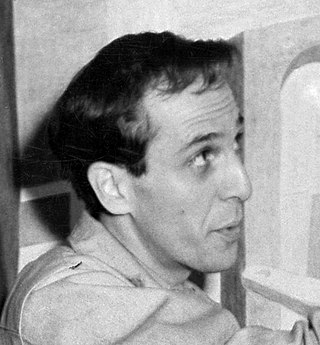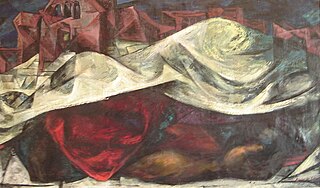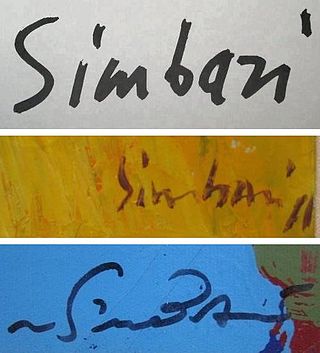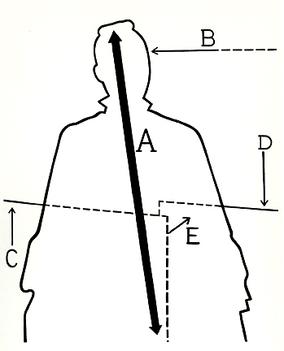Related Research Articles
Varese is a city and comune in north-western Lombardy, northern Italy, 55 km (34 mi) north-west of Milan. The population of Varese in 2018 was 80,559.

The Last Supper is a mural painting by the Italian High Renaissance artist Leonardo da Vinci, dated to c. 1495–1498, housed in the refectory of the Convent of Santa Maria delle Grazie in Milan, Italy. The painting represents the scene of the Last Supper of Jesus with the Twelve Apostles, as it is told in the Gospel of John – specifically the moment after Jesus announces that one of his apostles will betray him. Its handling of space, mastery of perspective, treatment of motion and complex display of human emotion has made it one of the Western world's most recognizable paintings and among Leonardo's most celebrated works. Some commentators consider it pivotal in inaugurating the transition into what is now termed the High Renaissance.

The Battle of Marengo was fought on 14 June 1800 between French forces under the First Consul Napoleon Bonaparte and Austrian forces near the city of Alessandria, in Piedmont, Italy. Near the end of the day, the French overcame General Michael von Melas' surprise attack, drove the Austrians out of Italy and consolidated Bonaparte's political position in Paris as First Consul of France in the wake of his coup d'état the previous November.

Jean-Baptiste-Camille Corot, or simply Camille Corot, was a French landscape and portrait painter as well as a printmaker in etching. A pivotal figure in landscape painting, his vast output simultaneously referenced the Neo-Classical tradition and anticipated the plein-air innovations of Impressionism.

Futurism was an artistic and social movement that originated in Italy, and to a lesser extent in other countries, in the early 20th century. It emphasized dynamism, speed, technology, youth, violence, and objects such as the car, the airplane, and the industrial city. Its key figures included Italian artists Filippo Tommaso Marinetti, Umberto Boccioni, Carlo Carrà, Fortunato Depero, Gino Severini, Giacomo Balla, and Luigi Russolo. Italian Futurism glorified modernity and, according to its doctrine, "aimed to liberate Italy from the weight of its past." Important Futurist works included Marinetti's 1909 Manifesto of Futurism, Boccioni's 1913 sculpture Unique Forms of Continuity in Space, Balla's 1913–1914 painting Abstract Speed + Sound, and Russolo's The Art of Noises (1913).

Luigi Carlo Filippo Russolo was an Italian Futurist painter, composer, builder of experimental musical instruments, and the author of the manifesto The Art of Noises (1913). Russolo completed his secondary education at Seminary of Portograuro in 1901, after which he moved to Milan and began gaining interest in the arts. He is often regarded as one of the first noise music experimental composers with his performances of noise music concerts in 1913–14 and then again after World War I, notably in Paris in 1921. He designed and constructed a number of noise-generating devices called Intonarumori.

Treia is a town and comune in the province of Macerata in the central Marche (Italy). It is 7 kilometres (4.3 mi) north of Pollenza, 12 kilometres (7.5 mi) west of Macerata, and 18 kilometres (11 mi) north-northeast of Tolentino.

Philip Guston was a Canadian American painter, printmaker, muralist and draftsman. "Guston worked in a number of artistic modes, from Renaissance-inspired figuration to formally accomplished abstraction," and is now regarded as one of the "most important, powerful, and influential American painters of the last 100 years." He frequently depicted racism, antisemitism, fascism and American identity, as well as—especially in his later most cartoonish and mocking work—the banality of evil. In 2013, Guston's painting To Fellini set an auction record at Christie's when it sold for $25.8 million.

Metaphysical painting or metaphysical art was a style of painting developed by the Italian artists Giorgio de Chirico and Carlo Carrà. The movement began in 1910 with de Chirico, whose dreamlike works with sharp contrasts of light and shadow often had a vaguely threatening, mysterious quality, "painting that which cannot be seen". De Chirico, his younger brother Alberto Savinio, and Carrà formally established the school and its principles in 1917.

Elaine Hamilton-O'Neal, professionally known as Elaine Hamilton, was an internationally known American abstract painter and muralist born near Catonsville, Maryland. She was professionally admired by the influential French critic Michel Tapié de Céleyran and exhibited internationally in solo and multiple-artist exhibits in the United States, Mexico, South Asia, Japan, and throughout Europe. She showed twice in the Venice Biennale and won first prize at the 1968 Biennale de Menton in France. She is known for the work of her final stylistic phase, known as action painting.

Vincenzo II Gonzaga was Duke of Mantua and Duke of Montferrat from 1626 until his death.

The "Manifesto of Fascist Intellectuals", by the actualist philosopher Giovanni Gentile in 1925, formally established the political and ideologic foundations of Italian Fascism. It justifies the political violence of the Blackshirt paramilitaries of the National Fascist Party, in the revolutionary realisation of Italian Fascism as the authoritarian and totalitarian rėgime of Prime Minister Benito Mussolini, who ruled Italy as Il Duce, from 1922 to 1943.

Triptych, May–June 1973 is a triptych completed in 1973 by the Irish-born artist Francis Bacon (1909–1992). The oil-on-canvas was painted in memory of Bacon's lover George Dyer, who committed suicide on the eve of the artist's retrospective at Paris's Grand Palais on 24 October 1971. The triptych is a portrait of the moments before Dyer's death from an overdose of pills in their hotel room. Bacon was haunted and preoccupied by Dyer's loss for the remaining years of his life and painted many works based on both the actual suicide and the events of its aftermath. He admitted to friends that he never fully recovered, describing the 1973 triptych as an exorcism of his feelings of loss and guilt.

Napoleon Crossing the Alps is a series of five oil on canvas equestrian portraits of Napoleon Bonaparte painted by the French artist Jacques-Louis David between 1801 and 1805. Initially commissioned by the King of Spain, the composition shows a strongly idealized view of the real crossing that Napoleon and his army made along the Alps through the Great St Bernard Pass in May 1800.

Futurism was an early 20th-century art movement which encompassed painting, sculpture, poetry, theatre, music, architecture, cinema and gastronomy. Filippo Tommaso Marinetti initiated the movement with his Manifesto of Futurism, published in February 1909. Futurist music rejected tradition and introduced experimental sounds inspired by machinery, and influenced several 20th-century composers. According to Rodney Payton, "early in the movement, the term ‘Futurism’ was misused to loosely define any sort of avant-garde effort; in English, the term was used to label a composer whose music was considered ‘difficult.’"

Nicola Simbari was an Italian painter.

EMI Italiana was a record label, it was an Italian offshoot of British Electric and Musical Industries, based in Milan. It was founded in 1931 as VCM and, in 1967 it was renamed EMI Italiana followed by EMI Music Italy in 1997 and, finally, EMI Records Italy Srl in 2013, when it was acquired by Universal Music Group.

Portrait of Madame Cézanne is a 1962 pop art painting by Roy Lichtenstein. It is a quotation of Erle Loran's diagram of one of Paul Cézanne's 27 portraits of his wife Marie-Hortense Fiquet, now in the Barnes Foundation, Philadelphia. It was one of the works exhibited at Lichtenstein's first solo exhibition in Los Angeles. The work became controversial in that it led to a reconsideration of what constitutes art.
Arte Informale is a term coined in 1950 by the French critic Michel Tapié to refer to the art movement that began during the mid-1940s in post-World War II Europe. This movement also paralleled the Abstract Expressionism movement that was taking place at the same time in the United States, and had ties to the Arte Povera movement. Sometimes referred to as Tachism, Art Autre or Lyrical Abstraction, it was a type of abstraction in which form became less important than that of the expressive impulses of the artist, and was opposed to the rationalism of traditional abstraction. The qualities of informal art explore the possibilities of gesture, materials, and signage as the basis of communication. Oftentimes art characterized as informal is executed spontaneously and the approach to painting and sculpture are generally gestural, performative, expressionistic and experimental. Certain artists such as Lucio Fontana, Alberto Burri and Emilio Vedova were crucial figures of this movement.

Edgard Victor Achille Charles Varèse was a French composer who spent the greater part of his career in the United States. Varèse's music emphasizes timbre and rhythm; he coined the term "organized sound" in reference to his own musical aesthetic. Varèse's conception of music reflected his vision of "sound as living matter" and of "musical space as open rather than bounded". He conceived the elements of his music in terms of "sound-masses", likening their organization to the natural phenomenon of crystallization. Varèse thought that "to stubbornly conditioned ears, anything new in music has always been called noise", and he posed the question, "what is music but organized noises?"
References
- ↑ Obituary, VareseNews.it
- ↑ Marengo, Luigi, "Letter to Critic" 1972